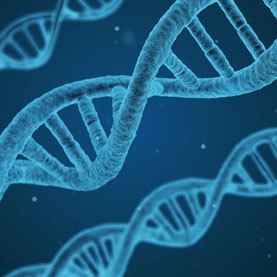XP causes problems because a gene that codes for a DNA repair protein is broken. Another word for this problem is “mutated”. A DNA repair protein is one that fixes damaged DNA. There are many types of DNA repair proteins.
Some recognize damage, some remove damaged portions of DNA, and others apply correct portions of DNA. They can also be specialized: some proteins work on damage caused by UV light, while others might work on damage caused by X-rays.
XP patients can’t fix damage caused by ultraviolet light in sunlight and other types of light. UV light creates lumps in DNA. If a lump in a random gene doesn’t get fixed, then that gene will have trouble making the protein it codes for. So, because of damage in one DNA repair gene, damage can accumulate in many other genes.
In a person with XP-C, the mutated gene codes for a protein that recognizes the damage. If you recall, I said that proteins fold into shapes, and function like keys in locks. Well, the XPC protein is specially shaped so that it recognizes the lumps caused by UV light. When it finds a lump, it sticks to it, and, because of the shape of the lump plus XP-C, other DNA repair proteins stick there, too. For example, there is a theory that XP-A helps bring other proteins to the damaged place. Next, other proteins remove the damaged area (XP-F and XP-G). Others insert the correct replacement parts. And a final group sews everything together. XP-B and XP-D are involved in removing the damaged bit of DNA. Mutations in XP-B and XP-D can cause Trichothiodystrophy (TTD) as well as Xeroderma Pigmentosum (XP).
Not all proteins involved in this process are called “XP” proteins; that’s why it hasn’t been identified by name.
When XPC doesn’t exist or doesn’t work very well, your body can’t recognize the lumps made by UV light. So, the other proteins don’t gather at a lump to fix it.
The result is that other mutations accumulate in all the other parts of your DNA. As a result, you get burned, get cancers, and have the other problems associated with XP.
It’s amazing how many things can go wrong because ONE protein isn’t working properly.

